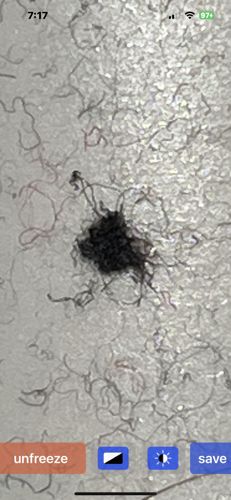Case-bearing Clothes Moth
Scientific Name: Tinea pellionella
Order & Family: Lepidoptera, Tineidae
Size: Larvae: up to 10-15 mm long; Adults: 6-10 mm wingspan.

Natural Habitat
Indoors, especially in dark, undisturbed areas such as closets, attics, storage chests, and under furniture. They seek out natural fibers in clothing, carpets, upholstered furniture, and stored textiles.
Diet & Feeding
The larvae feed on materials of animal origin containing keratin, such as wool, fur, silk, feathers, and felt. They can also damage cotton, linen, synthetics, and blends if these materials are soiled with food, sweat, or urine.
Behavior Patterns
Case-bearing clothes moth larvae construct and live within a silken case, often camouflaged with fibers from their food source. They carry this case with them as they move and feed. Adults are weak flyers and typically remain close to their emergence site. Larvae can remain in the larval stage for an extended period, depending on food availability and environmental conditions.
Risks & Benefits
Potential risks include significant damage to textiles, clothing, carpets, and other natural fiber items, leading to economic losses. They do not pose direct health risks to humans. They offer no significant ecological benefits in an indoor domestic setting.
Identified on: 8/27/2025